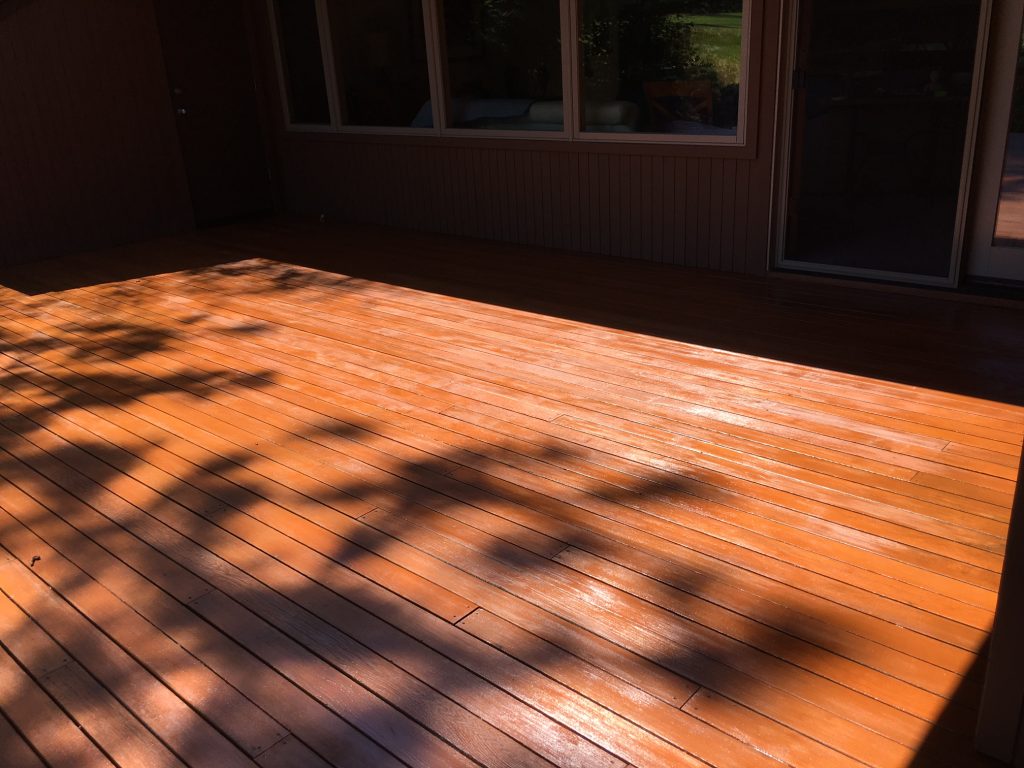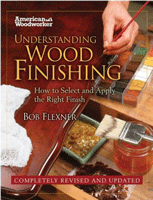We may receive a commission when you use our affiliate links. However, this does not impact our recommendations.

Applying an oil finish to a deck and not wiping off the excess will leave the wood spotty, gloss and dull.
My brother is remodeling his house, which is great for my blog because he’s a magnet for finish problems. Then he calls me.
Here’s the latest:
He hired a paint contractor to recoat his deck, which was worn in spots. The contractor pressure washed, let the deck dry, then brushed on a deck stain. The next day he brushed on an oil finish and didn’t wipe off the excess. (I’m not sure if it was linseed oil or an oil/varnish blend, but no matter, both would cause the same problem.) The oil dried spotty – glossy in some areas and dull in others. Then the contractor suggested two more coats of oil for better penetration, and gave my brother a good price.
So, should he accept this offer, my brother wanted to know?
No! I hear you saying, and I said the same. The oil will dry glossy and soft and sticky forever, or at least for a very long time because the contractor wasn’t wiping off the excess. Even if he did wipe off the excess, the extra coats of oil wouldn’t do any good – that is, penetrate – because the wood was already sealed by the stain.
I called the company that supplied the deck stain to find out if the company had recommended the oil coats. They hadn’t. In fact, they had cautioned against this. The contractor must not have read the directions.
We discussed what to do now with the spotty deck. We agreed that the glossy spots needed to be removed. The company rep suggested wiping with mineral spirits (paint thinner). I thought mineral spirits might not be strong enough after the oil had dried for over a week. I suggested naphtha, then he mentioned xylene (xylol), which is even stronger. Maybe a pressure washing would work.
My brother, or his contractor, is just going to have to experiment to see what works.
Anyway, don’t apply oil over a deck stain. The deck stain works because it contains pigment and a binder (usually oil or water-based finish) to bond the pigment in the wood. You don’t want a build because it will peel if water gets underneath. With some brands, there may be so little binder that a second coat is recommended. You can test if the wood is sealed by applying a few small puddles of water on the wood. If the water soaks in fairly quickly, the wood isn’t sealed. If the water stays puddled, the wood is sealed.
* * *
While I’m on this subject, I want to respond to the a commenter who wrote on June 26 that he had better luck with water-based deck stain than oil-based deck stain because oil-based attracts black mold. This can be true, especially in damp climates. Mildew feeds off of linseed oil.
It all depends on how the stain is made. There was a class-action lawsuit several decades ago against a big coatings company because of the mildew problem. I have not been able to find the outcome of the lawsuit. It happened before the Internet.
— Bob Flexner
 Don’t miss Bob Flexner’s “Understanding Wood Finishing” at shopwoodworking.com.
Don’t miss Bob Flexner’s “Understanding Wood Finishing” at shopwoodworking.com.
Here are some supplies and tools we find essential in our everyday work around the shop. We may receive a commission from sales referred by our links; however, we have carefully selected these products for their usefulness and quality.









